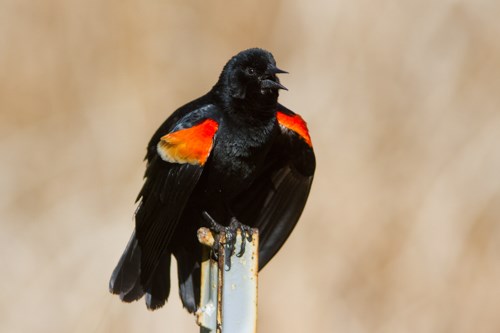
NPS/Gordon Dietzman IntroductionThe red-winged blackbird's scientific name Agelaius is from the ancient Greek word agelaios, which means "belonging to a flock." During migration and on wintering areas, these birds can be found in flocks numbering in the hundreds of thousands. They are arguably the most common bird on the North American continent and are often the first migratory birds seen in the spring by winter-weary Minnesotans. In Minnesota, red-wings are widely distributed across the state. They feed on mostly seeds and insects and will come to bird feeders, provided there is suitable breeding habitat nearby. Red-winged blackbirds are great fun to watch in the spring as the males set up their territories. Listen for them singing from prominent perches and watch them ruff their wings when other males approach. Chases may also occur until territorial boundaries are mutually agreed upon. Fascinating Facts
Identification
| |
Last updated: October 1, 2021
